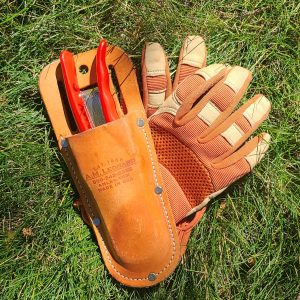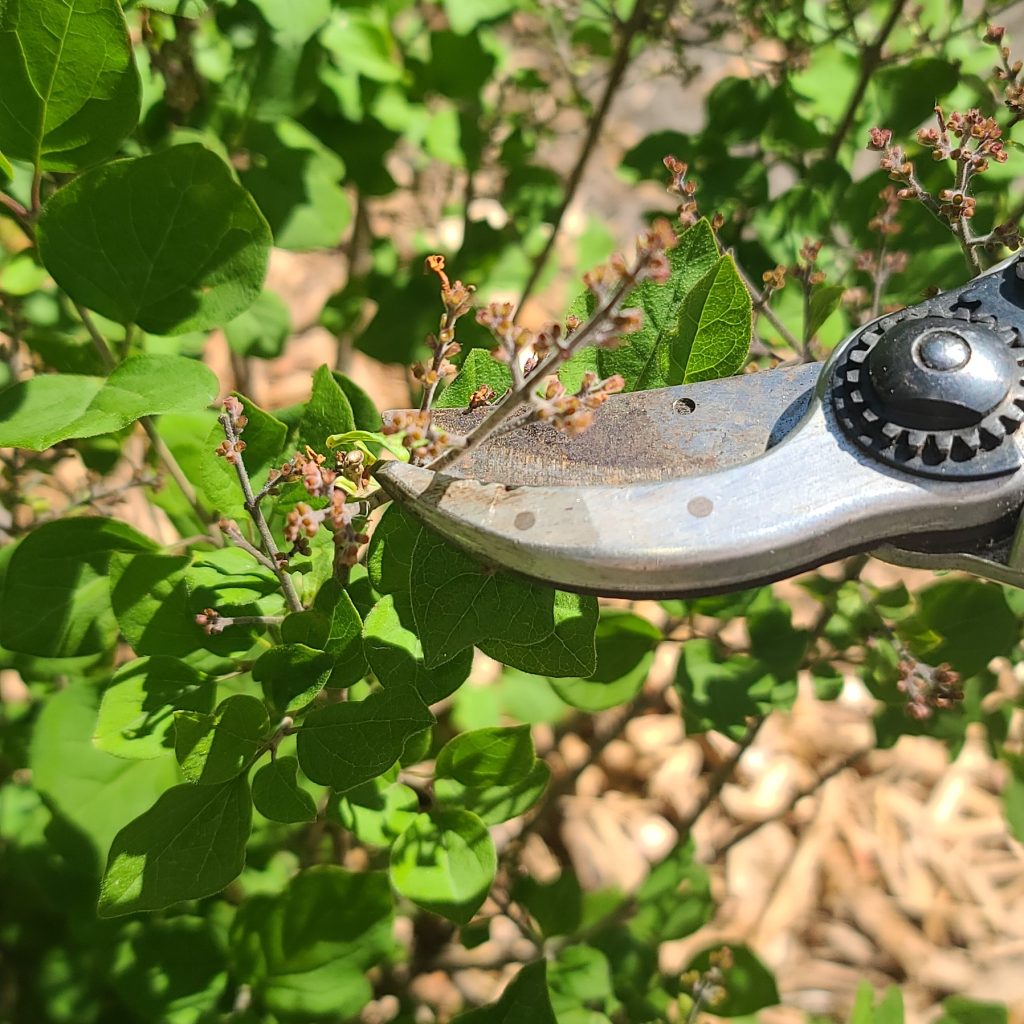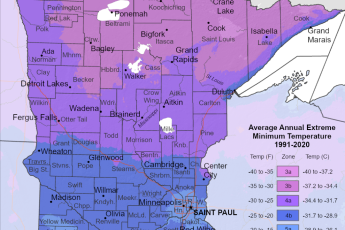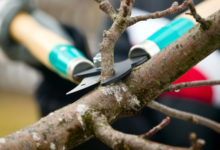
One of the first fragrant blooms of spring is the classic lilac. Their scent seems to carry for miles on a spring breeze. How do you keep your lilac blooming for years to come? Pruning your lilacs will ensure healthy growth, stronger stems and more bountiful blooms next spring. Lilacs set their flower buds for the next season after blooming in the current season. The best time for pruning lilacs is immediately after they are done blooming.
Benefits of Pruning
Annual pruning is important to maintain a lilac’s overall health and appearance. Without proper pruning, as lilacs age their blooms become smaller, fewer and for non-dwarf varieties, eventually out of reach. Pruning also helps to keep your lilacs vigorous. Pruning off dead, misshapen or weakened branches promotes strong growth, a more uniform shape and more productive flowering. Dwarf varieties of lilacs such as Syringa meyeri spp. or Syringa pubescens spp. generally do not require pruning other than removing spent blooms or damaged branches.
How to Prune
If you have a lilac that has been neglected for awhile, don’t be afraid to cut, lilacs can handle a heavy pruning. A good rule of thumb when pruning back a neglected lilac is to only remove one third of the older stems a season. By only removing a third, this gives your lilac a chance to bounce back without much stress.

A good pair of gloves and sharp pruners are all that is needed to maintain your lilac. It is recommended to prune by hand using hand pruners versus shearing your lilac with hedge shears.
Removing Spent Blooms
After your lilac has bloomed in the spring, it is time to prune or deadhead the spent blooms. Trim off spent blooms down to the first set of leaves using a sharp hand pruner. Deadheading your lilac will direct it’s energy into producing new growth and encourage abundant blooms for the following season. This method is also used for reblooming lilacs such as Bloomerang varieties to encourage blooming later in the summer.

Maintenance Pruning
Maintenance pruning is performed to keep lilacs vigorous as well as to manage their shape and size. Trim off any broken or damaged branches. To maintain shape and reduce the chance of foliar issues, trim off thin, low growing branches or suckers at the soil line. To rejuvenate an overgrown lilac, more aggressive pruning is best done in late winter or early spring. For more information on renewal and rejuvenation pruning, visit the University of Minnesota website.
With deadheading and a little annual maintenance your lilac will provide years of enjoyment with fragrant blooms. Need additional information on caring for lilacs? Send us an email at info@bloomonmn.com and we are happy to help! For a complete guide on when to prune your trees or shrubs, refer to our Tree and Shrub Pruning Guide.










